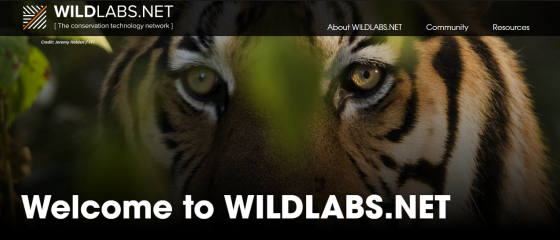New conservation technology network launches today

A new online platform, launched today, will allow conservationists and technology experts to share ideas on how to tackle some of the world's most pressing environmental challenges.
United for Wildlife, with support from Google.org and ARM, has today launched Wildlabs.Net – a conservation technology network designed to improve information-sharing between those working to address illegal wildlife trade and other threats to our natural world.
Through this online platform, an international community of conservationists, technologists, engineers, data scientists and entrepreneurs will work together to develop and share ideas for effective technology-based solutions to conservation challenges.
New technology, new opportunities
The threats to our natural world have never been greater. Populations of mammals, birds, reptiles, amphibians and fish have declined by more than half in the past 40 years. One of the most arduous challenges is stopping illegal wildlife trade, which is driving poaching and decimating wildlife populations. Elephants, rhinos, tigers and many other species are being lost at a shocking rate, while national and regional economies suffer.
Technology offers real opportunities to scale up our responses to these challenges and develop new solutions, but the lack of direct links and information-sharing between technologists and those working on the front line of conservation has hampered progress.
Until now.
Recognising this problem, United for Wildlife partners (including Fauna & Flora International) have joined forces with Google.org and ARM to launch WILDLABS.NET, which aims to close this collective information gap, and ensure that data and lessons learned from research and development, field tests and implementation of technology tools can be shared and developed collaboratively.
With a mobile-friendly interface, WILDLABS.NET allows users (ranging from field-based conservation biologists to engineers in urban hubs) to conveniently interact with technology developers, scientists and other conservationists on a regular basis. Users can manage their own profile and content, and are able to review and discuss showcased technologies.
In this way, WILDLABS.NET allows for collaboration on a scale never seen before in the conservation technology arena.
Ian Ferguson, vice president of worldwide marketing and strategic alliances at ARM, said, "Technology is already being used to help protect the planet's vital resources and now we are helping to accelerate these advances to protect threatened species and habitats.
"By bringing together experts from multiple sectors we can create solutions to challenges that have proven impossible to solve in isolation. Whether that is by enabling communities to apply new tools in protecting their natural resources, transforming our understanding of wildlife and natural systems through tracking and listening technologies or supporting the detection and prevention of poaching in protected areas, technology can be a powerful tool for the conservation cause."
Gavin Shelton, head of conservation labs at Fauna & Flora International (one of the seven United for Wildlife conservation partners) said, "There is much cause for optimism as WILDLABS.NET goes live. This is an exciting phase of a deeply collaborative journey with many people from different sectors, geographies and disciplines. We all understand that cooperation is the key to accelerating the pace and scale at which we develop new solutions to biodiversity loss. Through the growing WILDLABS.NET community, we can discover and implement those solutions together."
More information: Visit WILDLABS.NET to learn more and sign up. www.wildlabs.net/
Provided by Fauna & Flora International
















